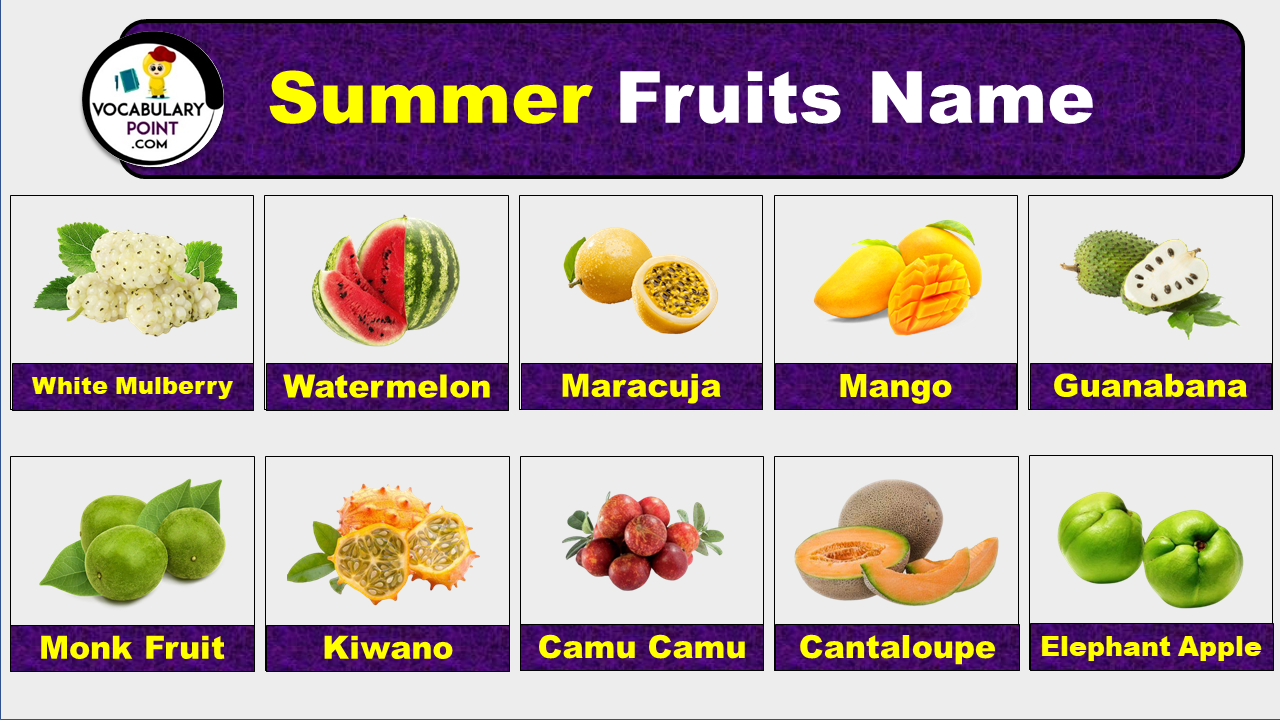Summer is a time of vibrant colors, warm sunshine, and a seemingly endless array of delicious fruits. As the temperatures rise, so does our craving for juicy, refreshing treats that not only quench our thirst but also provide us with essential nutrients. From the familiar favorites like watermelon and strawberries to the exotic tropical wonders like dragon fruit and durian, there is an abundance of summer fruits to indulge in. Join us on a mouthwatering journey as we explore the names and flavors of some of nature’s most delightful gifts that make summertime even sweeter.
Summer Fruits
White Mulberry
A fruit-bearing tree producing white to pink berries, known for sweet, slightly tart berries. Used in jams and medicinal purposes.
Quince
A yellow fruit resembling a pear, used mainly cooked due to its hard, bitter raw state. Rich in pectin for jams and jellies.
Elephant Apple
A large, round fruit native to India and Southeast Asia, with a hard shell and juicy, slightly acidic flesh used in traditional dishes.
Plantain
A starchy, banana-like fruit consumed cooked rather than raw. Used in many tropical cuisines, often fried or boiled.
Monk Fruit
A small, round fruit from Southeast Asia, used as a natural sweetener. Known for its intense sweetness without calories.
Coconut
A large, brown, hard-shelled seed of the coconut palm, with white flesh and clear liquid. Used in food and cosmetics.
Indian Blackberry
Also known as Jamun, a purple to black berry, tart and astringent, used in traditional medicine and various cuisines.
Maracuja
Also known as passionfruit, characterized by a round shape, tough rind, and juicy, seed-filled interior. Sweet and tart.
Dragonfruit
A bright pink or yellow fruit with white or red flesh dotted with black seeds. Mildly sweet, used in smoothies and salads.
Watermelon
A large, green fruit with sweet, juicy, red or yellow flesh. High in water content, vitamins A and C.
Miracle Berry
A small red berry that temporarily alters taste perception, making sour foods taste sweet. Used as a dietary novelty.
Chayote
A green, pear-shaped vegetable also known as vegetable pear, eaten cooked or raw. Mild in flavor, used in salads and stews.
Cape Gooseberry
A small, round, yellow fruit encased in a papery husk, sweet-tart in flavor. Used in desserts, salads, and as a garnish.
Red Currant
A small, tart, red berry used in jellies, sauces, and baking. High in vitamin C and antioxidants.
Strawberry
A red, heart-shaped berry with a sweet flavor and fragrant aroma. Popular in desserts and as a fresh fruit.
Avocado
A creamy, green fruit rich in healthy fats, vitamins, and minerals. Used in both savory and sweet dishes.
Sugar Apple
A green, scaly fruit with sweet, custard-like flesh. High in calories and nutrients, eaten fresh or used in desserts.
Mangosteen
A tropical fruit with a thick, purple rind and sweet, juicy, white segments inside. Known as the “queen of fruits.”
Blackberry
Juicy, dark berries known for their sweet and slightly tart flavor. Rich in vitamins C and K, and fiber.
Kiwi Berry
A small, grape-sized fruit resembling a miniature kiwi but without the fuzzy skin. Sweet and edible whole.
Kiwano
Also known as horned melon, with orange skin and lime green, jelly-like interior. Tart flavor, used in salads and as garnish.
Persimmon
A sweet, slightly tangy fruit with a soft to firm texture. Rich in vitamins A and C.
Blueberry
Small, blue berries known for their sweet flavor and high antioxidant content. Used in various culinary dishes.
Yuzu
A citrus fruit from East Asia, resembling a small grapefruit with uneven skin. Highly aromatic, used in cooking and beverages.
Mango
A tropical fruit with a sweet, juicy pulp. Rich in vitamins A and C, and dietary fiber.
Mulberry
Fruits of the mulberry tree, sweet and slightly tart, ranging in color from white to pink to black. Used in various cuisines.
Peach
A soft, juicy fruit with fuzzy skin and sweet flesh. Comes in white and yellow varieties, used in desserts and salads.
Salak
Also known as snake fruit, for its reddish-brown scaly skin. Sweet and acidic taste, with a crunchy texture.
Fig
Sweet fruits with a soft texture and multiple small seeds inside. High in fiber and minerals like magnesium and calcium.
Horned Melon
Also known as Kiwano, characterized by its horn-like spikes and lime green, jelly-like interior. Tart and refreshing.
Grapefruit
A large citrus fruit with a slightly bitter and sour taste. Comes in varieties of white, pink, and ruby hues.
Camu Camu
A small, sour berry native to the Amazon rainforest, known for its exceptionally high vitamin C content.
Indian Gooseberry
Also known as Amla, a sour, nutrient-rich berry used in Ayurvedic medicine and as a health supplement.
Kiwifruit
A small fruit with fuzzy, brown skin and bright green or yellow flesh. Sweet and tangy, rich in vitamins C and K.
Raspberry
Small, red berries known for their sweet and slightly tart flavor. High in fiber, vitamins, and antioxidants.
Cantaloupe
A type of melon with a netted skin and sweet, orange flesh. High in vitamins A and C.
Cherry
Small, round, red or black fruits with a sweet or tart flavor. Popular in desserts and as fresh snacks.
Breadfruit
A large, starchy fruit, used cooked similar to potatoes. Versatile in culinary uses, from fried to boiled.
Plum
Small, juicy fruits with a sweet and tart flavor, available in a variety of colors from purple to red to yellow.
Guanabana
Also known as soursop, a large, spiky, green tropical fruit with a sweet, creamy texture and unique flavor.
Cloudberry
A rare, amber-colored berry found in cold, boggy regions. Sweet and tart, used in desserts and jams.
Gooseberry
Small, sour, green fruits often used in desserts and jams. Rich in vitamin C and dietary fiber.
Passionfruit
A tropical fruit with a hard outer rind and juicy, seed-filled interior. Sweet and tart, rich in vitamins A and C.
Finger Lime
A cylindrical citrus fruit, known for its caviar-like interior. Tart and tangy, used as a garnish in dishes.
Honeydew
A pale green melon with sweet, light green flesh. High in vitamins C and B6.
Ugli Fruit
A citrus fruit with a rough, green, and orange exterior. Sweet and tangy, a hybrid between a grapefruit, orange, and tangerine.
Orange
A popular citrus fruit with a sweet-tart taste, known for its high vitamin C content. Used in foods and drinks.
Miracle Fruit
A berry that changes taste perceptions, making sour and bitter foods taste sweet. Used for flavor-tripping experiences.
Carambola
Also known as starfruit, for its star shape when sliced. Sweet and sour in taste, rich in vitamin C.
Feijoa
A green, egg-shaped fruit with a sweet, aromatic flavor. The flesh is juicy and slightly tart, used in desserts and drinks.
Mamey Sapote
A tropical fruit with a rough brown skin and sweet, orange-red flesh. Rich in vitamins and minerals, eaten fresh or in desserts.
Guava
A tropical fruit with green skin and pink or white flesh. Rich in dietary fiber, vitamin C, and lycopene.
Lime
A citrus fruit, typically green, small, and sour in taste. Used for its juice and zest in cooking and beverages.
Sour Cherry
A tart variety of cherry, darker in color. Used in cooking and baking, known for its distinct tart flavor.
Lemon
A bright yellow citrus fruit with a strong sour taste. Used for its juice and zest in cooking and beverages.
Sea Buckthorn
A small, orange berry known for its high vitamin C content. Used in juices, oils, and nutritional supplements.
Sunberry
A small, dark berry similar to a blueberry but with a unique taste and texture. Used in jams and desserts.
Açaí Berry
A small, dark purple berry from the Amazon rainforest, known for its antioxidant properties. Used in smoothies and bowls.
Pomelo
The largest citrus fruit, with a sweet and slightly tart taste. Thicker skin than grapefruits.
Loganberry
A hybrid berry of blackberry and raspberry, dark red in color, with a tart flavor. Used in jams and desserts.
Tamarind
A tropical fruit used for its sour-sweet flavor, often in Asian and Latin American cuisines. Comes in a pod-like shell.
Yangmei
Also known as Chinese bayberry, a round, red fruit with a sweet and tart flavor. Eaten fresh or used in traditional Chinese medicine.
Pomegranate
A fruit with a tough outer rind and sweet, juicy seeds inside. High in antioxidants and vitamins C and K.
Pineapple
A tropical fruit with a rough, spiky exterior and sweet, juicy interior. Rich in vitamins, enzymes, and antioxidants.
Cactus Pear
Also known as prickly pear, a fruit from the cactus plant, with a sweet, watermelon-like flavor. Eaten fresh or in beverages.
Jujube
A small, red or brown fruit, often dried to resemble dates. Sweet and chewy, used in traditional Asian medicine.
Papaya
A tropical fruit with orange flesh and black seeds. Sweet and rich in vitamins C and A.
Nectarine
A smooth-skinned fruit similar to a peach but without the fuzz. Sweet with a slightly firmer texture.
Breadnut
Also known as Maya nut, a starchy fruit used like a vegetable or ground into flour. Nutty flavor, used in traditional dishes.
Juneberry
A small, dark purple fruit also known as saskatoon berries. Sweet, nutty flavor, used in pies and jams.
Black Raspberry
A berry similar to raspberries but black in color and more earthy in flavor. High in antioxidants.
Lychee
A small, tropical fruit with a sweet, fragrant flavor. Has a rough, red outer skin and a white, juicy interior.
Apricot
A small, orange fruit with velvety skin and sweet, slightly tart flesh. High in vitamins A and C.
Surinam Cherry
A small, red or black fruit with a tart flavor, grown in tropical regions. Used in jams and jellies.
Black Currant
A small, tart berry rich in vitamins C and A, potassium, and antioxidants. Used in juices and jams.
Cranberry
Small, tart, red berries often used in sauces, juices, and dried snacks. Known for urinary tract health benefits.
Mangaba
A fruit native to Brazil, used both fresh and in desserts. Sweet and slightly sour, with a creamy texture.
Blood Orange
A variety of orange with crimson, almost blood-colored flesh. Sweet flavor with a hint of raspberry.
Cucumber
A long, green vegetable with a crisp texture and refreshing taste. Mostly eaten raw in salads.
Kiwi
A small fruit with fuzzy, brown skin and bright green or yellow flesh. Sweet and tangy, rich in vitamins C and K.
Longan
A tropical fruit related to the lychee, with a translucent flesh and sweet taste. Eaten fresh or dried.
Elderberry
Small, dark berries known for their immune-boosting properties. Often used in syrups and jams.
Mora Berry
A type of blackberry found in South America, known for its sweet and slightly tart flavor. Used in desserts and jams.
Boysenberry
A large, juicy berry with a deep maroon color, a cross among blackberry, raspberry, and loganberry. Sweet and tangy flavor.
Sapodilla
A tropical fruit with a brown, fuzzy skin and sweet, pear-like flesh. High in vitamins and minerals.
Rambutan
A tropical fruit with hairy shell and sweet, juicy flesh similar to lychee. Eaten fresh or canned.
Ackee
A tropical fruit with a unique taste and texture, used in Jamaica’s national dish. Must be properly prepared to avoid toxicity.
Barbados Cherry
A small, red fruit, also known as Acerola, rich in vitamin C. Used in juices and nutritional supplements.
Soursop
Also known as Guanabana, a large fruit with a spiky green exterior and soft, sweet interior. Used in beverages and desserts.
Starfruit
A tropical fruit shaped like a star when sliced. Sweet and sour in taste, rich in vitamin C.
Ground Cherry
A small, yellow fruit encased in a paper-like husk, with a sweet-tart flavor. Used in jams, pies, and fresh.
Jabuticaba
A unique Brazilian fruit that grows directly on the trunk of its tree. Sweet and grape-like in flavor.
Jackfruit
A large tropical fruit with a sweet taste and texture that can resemble meat when cooked. Rich in vitamin B6.
Explore More Fruits Names:
Sweet Fruits | Root Fruits | Berries Fruits
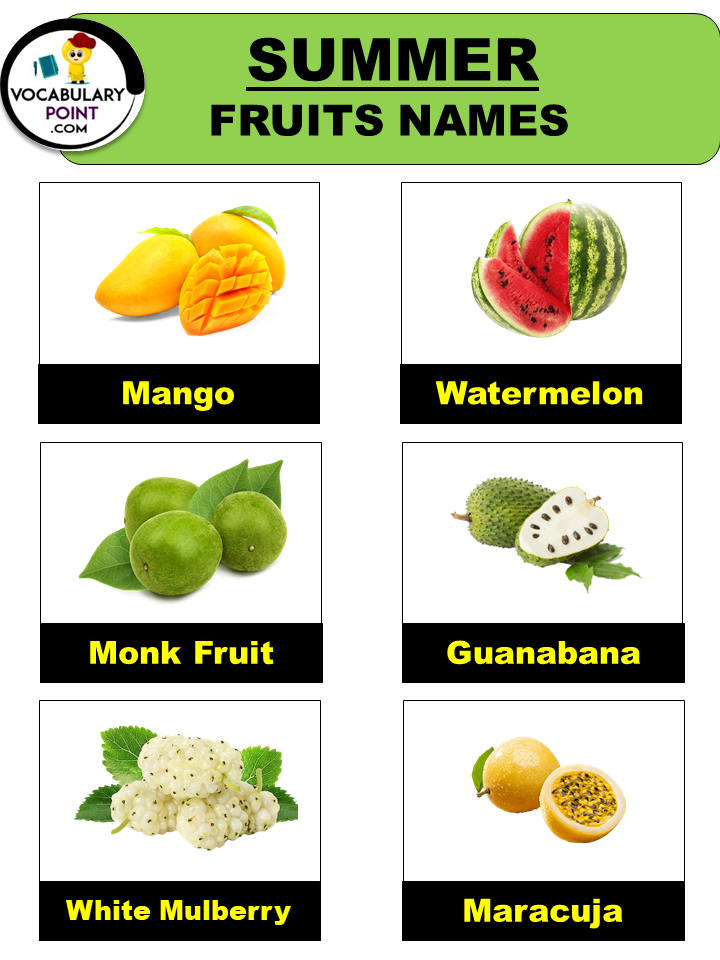
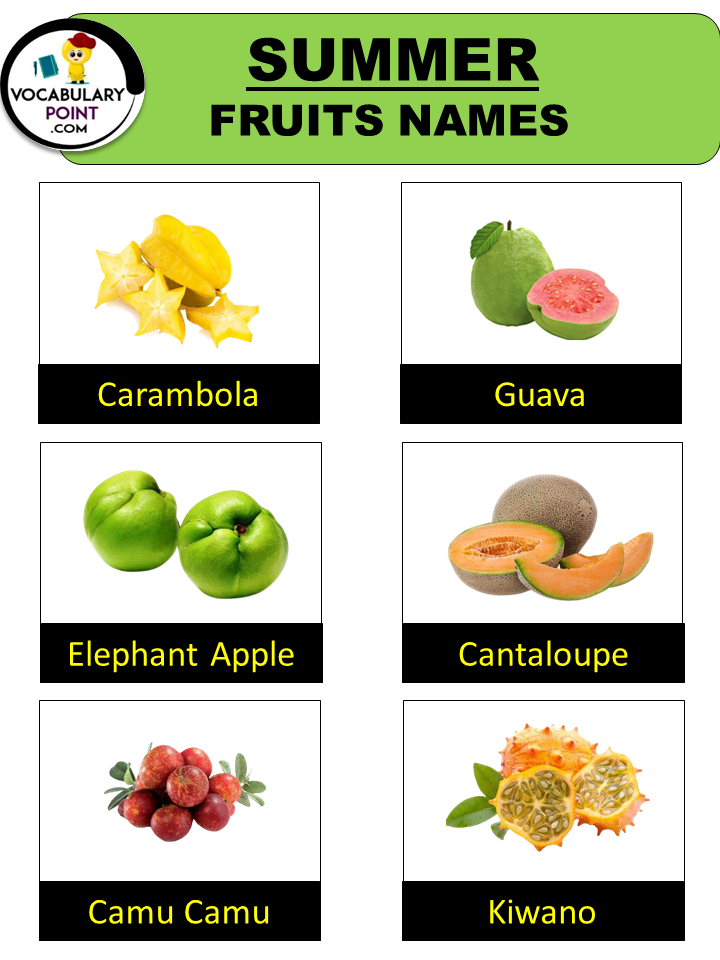
Names Of Summer Fruits With Their Benefits
Mango

- Vision Enhancement:
The high content of vitamin A in mangoes supports good vision, helping to prevent night blindness and dry eyes, while also promoting overall eye health.
Watermelon
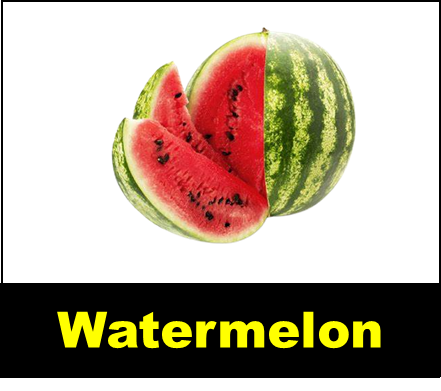
- Hydration Support:
With its high water content, watermelon is excellent for staying hydrated, especially during hot weather or after physical activity.
Monk Fruit
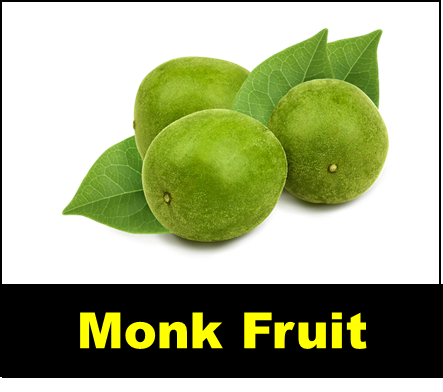
- Potential Anti-Inflammatory Effects:
Some studies suggest that compounds in monk fruit may possess anti-inflammatory properties, which could support a healthy inflammatory response in the body.
Guanabana
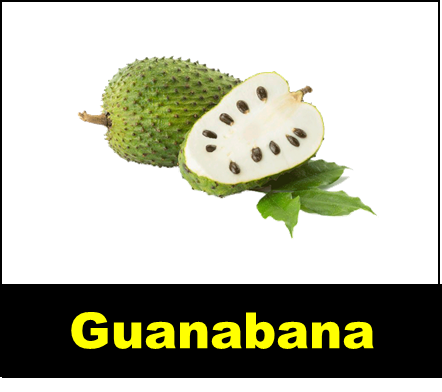
- Immune System Support:
Guanabana is rich in vitamin C, which boosts the immune system’s defenses against infections and illnesses.
White Mulberry
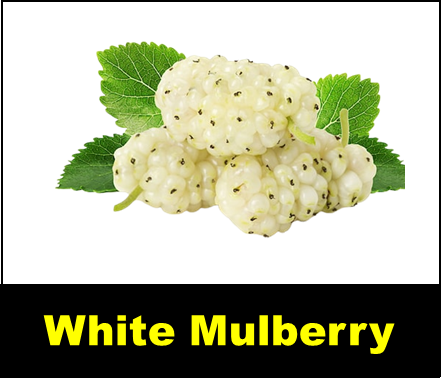
- Blood Sugar Regulation:
White mulberry leaves contain compounds that may help regulate blood sugar levels, making it beneficial for individuals with diabetes or those looking to manage their blood sugar.
Maracuja
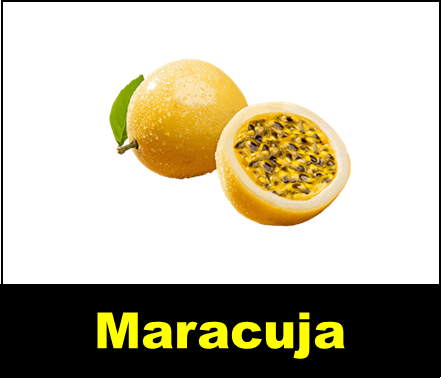
- Antioxidant Properties:
Maracuja contains antioxidants that help combat free radicals in the body, potentially reducing the risk of chronic diseases and promoting overall well-being.
Carambola
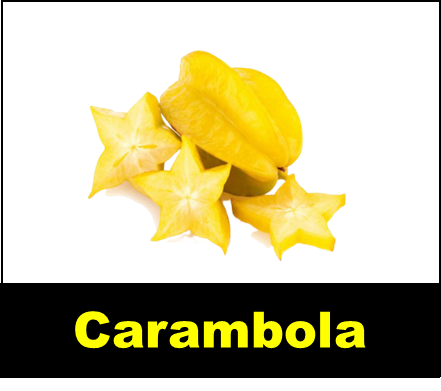
- Rich in Vitamin C:
Carambola is a good source of vitamin C, which supports the immune system, promotes healthy skin, and aids in wound healing.
Guava
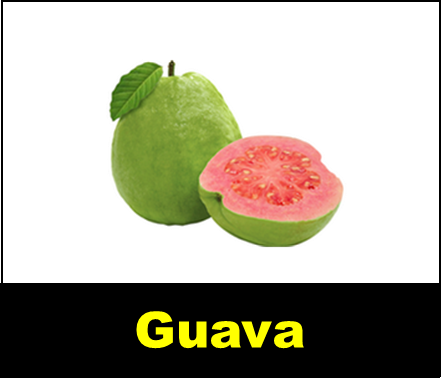
- Rich in Vitamin C:
Guava is a powerhouse of vitamin C, which boosts the immune system, promotes healthy skin, and aids in wound healing.
Elephant Apple
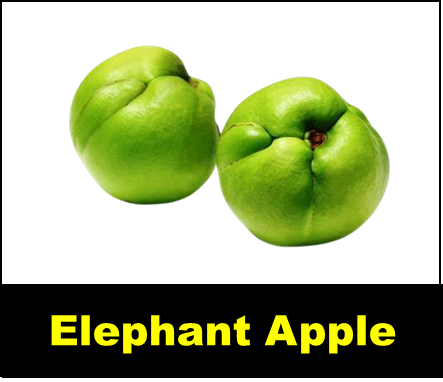
- Digestive Aid:
Elephant apple is known for its digestive properties, helping to alleviate indigestion, bloating, and other digestive discomforts.
Cantaloupe
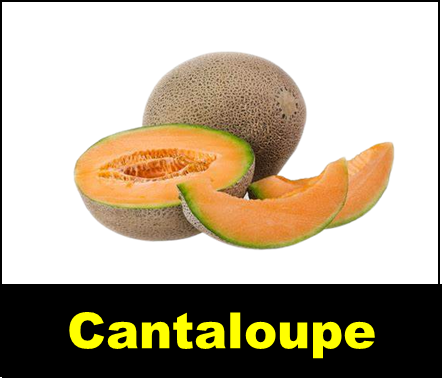
- Hydration Support:
Cantaloupe’s high water content helps keep the body hydrated, especially during hot weather or after physical activity.
Camu Camu
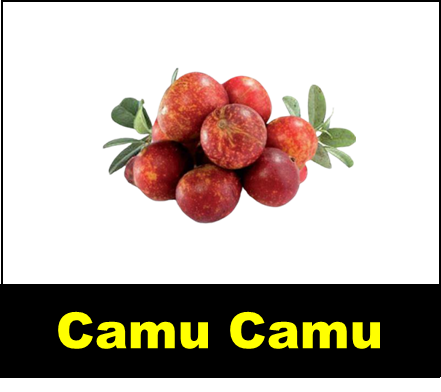
- High Vitamin C Content:
Camu camu is incredibly rich in vitamin C, which boosts the immune system, supports skin health, and aids in collagen formation.
Kiwano
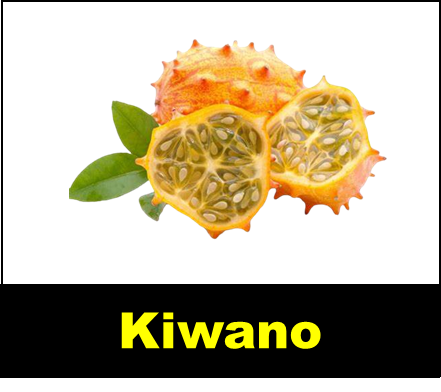
- Rich in Vitamin C:
Kiwano is a good source of vitamin C, which supports the immune system, promotes healthy skin, and aids in wound healing.
Summer Fruits Season List
- Strawberries: Late spring to early summer, typically from May to July.
- Cherries: Depending on the variety, cherries can be available from late spring through early summer, with peak season in June and July.
- Blueberries: Late spring to early summer, usually from June to August.
- Raspberries: Summer, with peak season in June and July.
- Blackberries: Late spring to mid-summer, primarily from June to August.
- Watermelons: Summer, with peak availability from June to August.
- Peaches: Summer, typically from June to early September.
- Apricots: Late spring to early summer, generally from May to July.
- Plums: Summer, with peak season in July and August.
- Nectarines: Summer, similar to peaches, they’re available from June to early September.
- Mangoes: Summer, with availability from late spring to early fall, depending on the region.
- Pineapples: Summer is the prime season, but they can be found year-round in some regions.
- Grapes: Late summer to early fall, usually from August to September.
- Figs: Late summer, with peak season in August and September.
